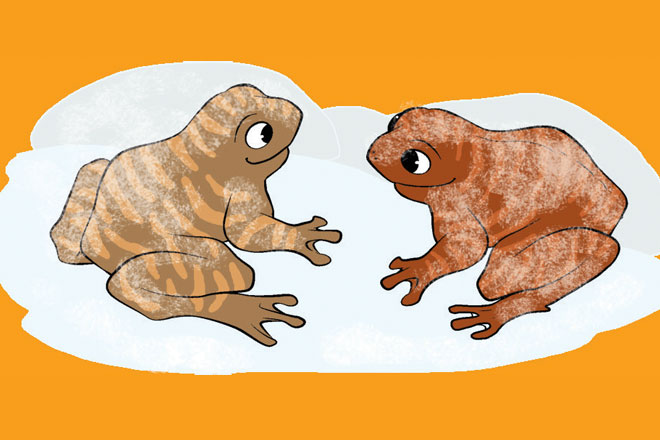During winter, our jackets and sweaters keep us warm. Sometimes, we light fires to stay warm. But unlike us, the wood frog freezes itself to escape the harsh winter.
The wood frog, found in North America, is known to freeze through winter. When the temperature drops below freezing point, the wood frog takes cover and starts the freezing process. Its organs pump water that fills up every little cavity in the body. Gradually, 65 percent of the water turns to ice. Subsequently, the frog’s breathing and heartbeat stop.
The frog has a substance in its body that lowers the freezing temperature of its tissues, preventing them from becoming completely frozen and eventually dying. During this frozen hibernation, the frog’s body temperature remains between -1°C and -6°C. The metabolism of the frog drops and this helps it survive the winter without food.
In a pond full of wood frog tadpoles, each tadpole has the ability to identify its siblings.
During spring, when it starts becoming warmer, the ice inside the frog’s body melts. The water flows back to the cells and blood starts flowing again. Slowly, the frog returns to its normal self.














COMMENT